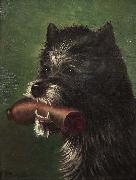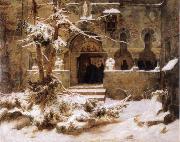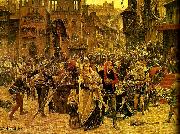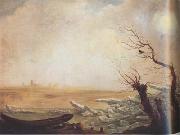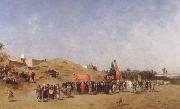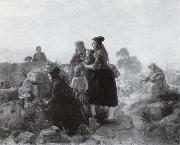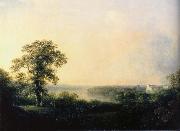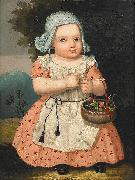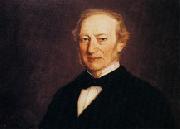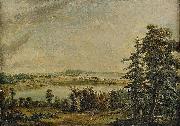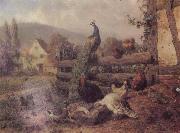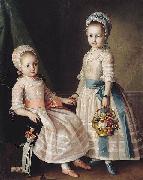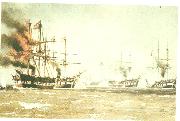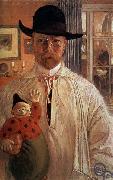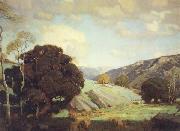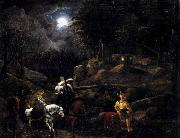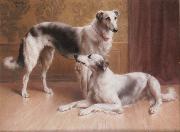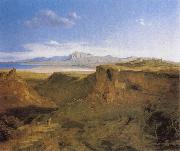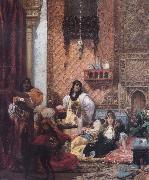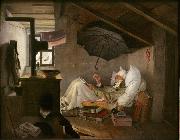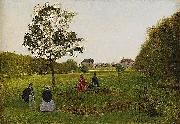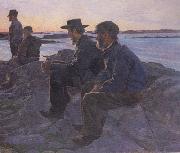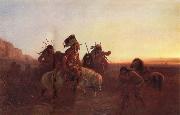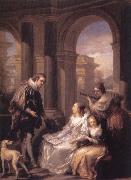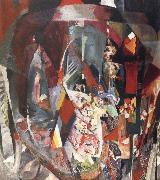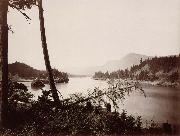|
|
|
|
|
|
|
|
|
|
|
|
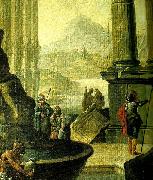 |
carl gustav pilo
|
|
Carl Gustaf Pilo, konstnär, målare, född 1711 i Nyköping, död 2 mars 1793 i Stockholm
Han studerade vid Konstakademien och för Arenius samt vidare i Tyskland. År 1740 till 1772 bosatt i Danmark, där han utnämndes till hovmålare, professor och direktör för akademien. I Danmark utförde han ett antal porträtt bl.a. av Fredrik V och Juliana Maria samt de kungliga barnen.
Efter Gustav III:s statskupp år 1772 blev man i Danmark avogt inställd mot svenskar och Pilo blev helt enkelt tvungen att fly till Sverige. Han bosatte sig i sin barndomsstad Nyköping. Gustav III sökte upp honom med uppdraget, att måla kungens kröning. Pilo försökte avsäga sig det, för han hade ju faktiskt inte varit med vid kröningen och han hade aldrig tidigare målat en gruppbild. Men kungen var envis och han ville ha en motsvarande målning till Ehrenstrahls på Drottningholm av Karl XI:s kröning och Gustav III ville att Pilo skulle måla den. Pilo antog till slut uppdraget och 1782 till 1793 arbetade han med tavlan , utan att bli helt färdig, vilket man ser om man studerar den noga där man på flera ställen på målningen upptäcker flera dubbla ansikten. Dessutom experimenterade Pilo med asfaltsfärg, vilket gör att tavlan uppvisar många större sprickbildningar.
Tavlan Gustav III:s kröning hänger på Nationalmuseum och är Pilos kanske yppersta arbete och en pärla i svensk konst. Kompositionen är väl avvägd, koloriten glänsande harmonisk samt de individuella porträtten är briljant utförda.
Pilo bör räknas till våra främsta målare och var särskilt skicklig som kolorist, där man ser spår och inflytande från den venetianska skolan och från Rembrandt. Många av hans tavlor utstrålar festivitas detta gäller framförallt den stora kröningstavlan. Pilos betydelse i svensk konsthistoria kan också utläsas i att Postverket vid tre tillfällen använt målningar av P. som motiv vid frimärksutgivning. Bl a utgavs till Pilos 250-årsdag en detalj ur kröningstavlan.
Även två av Pilos bröder var också konstnärer, dock med mindre framgång, Jöns Pilo (1707-?) och Olof Pilo (1718-1795). |
|
|
|
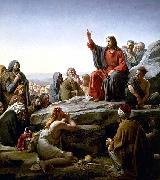 |
Carl Heinrich Bloch
|
|
(May 23, 1834 C February 22, 1890) was a Danish painter.
He was born in Copenhagen and studied with Wilhelm Marstrand at the Royal Danish Academy of Art (Det Kongelige Danske Kunstakademi) there.
His early work featured rural scenes from everyday life. From 1859 to 1866, Bloch lived in Italy, and this period was important for the development of his historical style.
His first great success was the exhibition of his "Prometheus Unbound" in Copenhagen in 1865. After the death of Marstrand, he finished the decoration of the ceremonial hall at the University of Copenhagen.
He was then commissioned to produce 23 paintings for the Chapel at Frederiksborg Palace. These were all scenes from the life of Christ which have become very popular as illustrations. The originals, painted between 1865 and 1879, are still at Frederiksborg Palace. |
|
|
|
|
|
|
|
|
|
|
|
|
|
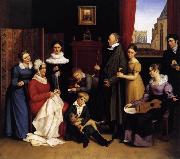 |
Carl Joseph Begas
|
|
Carl Joseph Begas (September 30, 1794 - November 24, 1854), was a German historical painter born at Heinsberg near Aachen. His father, a retired judge, destined him for the legal profession, but the boy's tastes pointed definitely in another direction. Even at school he was remarked for his wonderful skill in drawing and painting, and in 1812 he was permitted to visit Paris in order to perfect himself in his art.
He studied for eighteen months in the atelier of Antoine Jean Gros then began to work independently. In 1814 his copy of The Madonna della Sedia was bought by the king of Prussia, who was attracted by the young artist and did much to advance him. He was engaged to paint several large Biblical pictures, and in 1825, after his return from Italy, continued to produce paintings which were placed in the churches of Berlin and Potsdam. Some of these were historical pieces, but the majority were representations of Scriptural incidents. Begas was also celebrated as a portrait-painter, and supplied to the royal gallery a long series of portraits of eminent Prussian men of letters. At his death he held the post of court painter at Berlin.
|
|
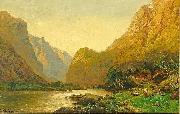 |
Carl jun. Oesterley
|
|
(January 23, 1839 - December 16, 1930) was a German landscape painter who was a native of Göttingen. He was the son of painter Carl Friedrich Wilhelm Oesterley (1805-1891).
He attended classes at the Polytechnikum in Hannover and, beginning 1857, at the Kunstakademie (Art Academy) in Dusseldorf where he studied religious painting under Ernst Deger. During a visit to Lebeck in 1865, where he copied Hans Memling's Passion, he made some attempts at architectural and landscape painting. These turned out so well that from then on he dedicated himself to landscape painting. Beginning in 1870 he focused his artistic efforts mainly on Norwegian landscapes, for which he devoted several study trips. He lived in Hamburg and received a first-class medal from the Menchener Ausstellung.
|
|
|
|
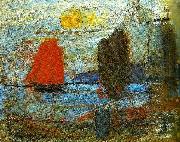 |
carl kylberg
|
|
Carl Oscar Kylberg, född 23 september 1878 på Vasängen i Fridene församling, död 6 januari 1952 i Stockholm, svensk konstnär och representant för Göteborgskoloristerna.
Carl Kylberg var son till kontorschef Gustaf Kylberg och friherrinnan Eleonora von Essen och storebror till konstnären Erik Kylberg. Hans fastrar och farbror var konstnärerna Regina Kylberg-Bobeck, Marina Kylberg och Hjalmar Kylberg. Farfadern Lars Wilhelm Kylberg var konstnär vid sidan av lantbruket på familjegodset Såtenäs i Västergötland.
Kylberg studerade först vid tekniska skolan i Stockholm och i Berlin för att bli arkitekt men övergick till måleri omkring 1900. Han studerade under en tid vid Valand i Göteborg som elev till Carl Wilhelmson. Hans verk kännetecknas ofta av ett glödande oljemåleri med starka färger och han avbildade ofta landskap och figurkompositioner på ett avskalat man??r. Under senare delen av sitt konstnärskap skapade han en mängd religiösa motiv.
Kring 1930-talet fick han sitt genombrott och han kom att ställa ut, förutom i Sverige även i Köpenhamn, Paris, London, Budapest och i USA men hans måleri var för många provocerande och 1938 gick regeringen in och stoppade ett köp av målningen Uppbrottet för Nationalmuseum i Stockholm.
En av hans mest välkända målningar är Hemkomsten från 1938 som hänger på Göteborgs konstmuseum och som föreställer ett skepp i silhuett mot en nästan brinnande gul himmel och ett rödfärgat hav. Denna målning förevigades också 1978 på ett svenskt frimärke av valören 90 öre.
Sedan 1980-talet har många av hans tavlor sålts för rekordpriser vid olika internationella konstauktioner.
|
|
|
|
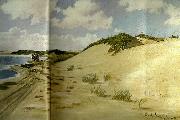 |
carl locher
|
|
(1851-1915) was a Danish realist painter who from an early age became a member of the Skagen group of painters.
Even before he began his studies at the Royal Danish Academy of Art in 1872, he was encouraged by Holger Drachmann to spend a couple of months in Skagen, the artists colony in the far north of Jutland. He quickly completed paintings of the beach, some with fishing boats or wrecks. He also became interested in the horse-drawn carriage which travelled along the beach on its journey from Frederikshavn.
In the 1870s, Locher continued his studies in Paris but he visited Skagen whenever he was back in Denmark. Ultimately he had a house built there where he lived until his death. |
|
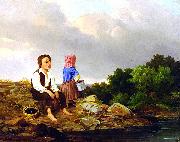 |
Carl Ludwig Brandt
|
|
(22 September 1831 Holstein, Germany - 1905) was a German-born artist who worked mostly in the United States.
Brandt was born near Hamburg, in Holstein, Germany. His father and grandfather were physicians in Hamburg. His father taught him drawing at the age of seven, and he subsequently studied in the principal galleries of Europe. He served in the First War of Schleswig (1848-1850), between Germany and Denmark.
He came to the United States in 1852. He painted several portraits previous to 1864, and in that year built his studio in Hastings-on-Hudson, New York, but lived in Europe from 1865 until 1869. He was chosen a national academician in 1872, and in 1883 was elected first director of the Telfair Academy of Arts and Sciences, Savannah, Georgia, where he resided in winter. At Telfair he offered art instruction and oversaw art acquisitions, including plaster casts, thus transforming a family mansion into a cultural institution.
|
|
|
|
 |
Carl Nebel
|
|
Carl/Carlos Nebel (March 18, 1805 - June 4, 1855) was a German engineer, architect and draughtsman, best known for his detailed paintings of the Mexican landscape and people and of the battles of the Mexican-American War.
Nebel was born at Altona, today a part of Hamburg. After studies in Hamburg and Paris, he travelled to America, where he was a resident of Mexico from 1829 until 1834. In 1836, he published in Paris his renowned illustrated work on that country-Voyage pittoresque et archeologique dans la partie la plus interessante du Mexique, with 50 lithographs made from his paintings, twenty of which were hand-colorized, and an introduction written by Alexander Humboldt. |
|
|
|
|
|
|
|
|
|
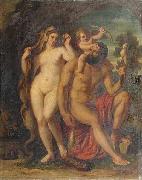 |
Carl Rahl
|
|
Carl Rahl, sometimes spelled Karl Rahl (13 August 1812 - 9 July 1865), was an Austrian painter.
Rahl was born in Vienna to Carl Heinrich Rahl (1779 - 1843), an engraver. He attended the Academy of Fine Arts Vienna and won a prize at the age of 19. From there he traveled to Munich, Stuttgart, Hungary, and in 1836 to Italy. He remained in Italy from 1836 to 1843, where he in particular studied representatives of the Venetian and Roman schools of art, and painted die Auffindung von Manfreds Leiche (1836).
Rahl's style, especially his views on color and perspective, were largely formed during his years in Rome. He returned after 1843 to Vienna for two years, and then led an itinerant life for the next five years, traveling through Holstein, Paris, Rome, Copenhagen, and Munich, making a living as a portrait painter. In this period he painted Manfreds Einzug in Luceria (1846), and die Christenverfolgung in den Katakomben.
In 1850, he was appointed professor at the Academy of Fine Arts Vienna, but for political reasons he was soon dismissed from the position. He then opened a private art school, which expanded quickly into a studio that produced monumental-scale paintings and enjoyed considerable success. He was commissioned by Greek philanthropist Simon Sinas to paint a number of works for the facade and vestibule of Vienna's Fleischmarkt Greek Church (Ludwig Thiersch being commissioned for the remainder of the frescoes), which was then being rebuilt by architect Theophil Freiherr von Hansen. In addition, Sinas commissioned four paintings depicting heroes of the Greek War of Independence, and a further four paintings to decorate his residence.
Rahl decorated the Heinrichshof in 1861 with personifications of Art, Friendship, and Culture, and the Palais Todesco with representations from the mythology of Paris. In 1864, he painted a number of allegorical figures in the stairway of the Waffenmuseum (now part of the Kunsthistorisches Museum). In this period he also painted several frescoes: Mädchen aus der Fremde (in a villa of Gmunden), a composition for a ballroom of a palace in Oldenburg, and a cycle from the tale of the Argonauts. Also, he painted the tympanum of the Athens Academy building, designed by Theophil von Hansen in 1859 and executed by Ernst Ziller (completed in 1885), and paintings in the portico of the Athens university, designed by Christian Hansen (Theophil Hansen's son). The central painting show Bavarian king Otto I surrounded by the Muses; the left hand fresco shows Prometheus bringing fire down from Mount Olympus. |
|
|
|
|
|
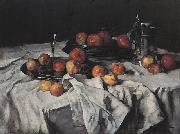 |
Carl Schuch
|
|
(30 September 1846 - 13 September 1903) was an Austrian painter, born in Vienna, who spent most of his lifetime outside Austria, in Germany, Italy and France. He painted primarily still lifes and landscapes.
During the period 1882-94 he was based in Paris, where he was greatly impressed by the work of Claude Monet whom he described as "the Rembrandt of plein-air painting" although he was attracted most of all to Rembrandt and the artists of the Barbizon school. In 1884 and 1885 he spent the summer months in the Netherlands, studying the Dutch old masters as well as the contemporary painters of the Hague School, and filling notebooks with detailed descriptions of the colors he observed in paintings that he admired. Of all the artists belonging to the circle around Wilhelm Leibl (called the Leibl-Kreis), Schuch was the most devoted to color. His work marks the transition from the realist tradition to the modern movement in Vienna, esthetically, however, it is far from contemporary trends, and from its means and ends, comparable to Paul Cezanne (Gottfried Boehm, referring to Arnold Gehlen). |
|
|
|
|
|
|
|
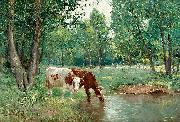 |
Carl Tragardh
|
|
(20 September 1861 - 5 June 1899) was a Swedish painter.
Trägårdh studied at the Royal Swedish Academy of Arts in Stockholm 1881-1883, in Karlsruhe 1883-84, and Munich until 1885. He then moved to France where he became a resident until his death. He exhibited both in Sweden and in France. He received a couple of medals and found a patron in the French singer and art collector Jean-Baptiste Faure (1830 - 1914) who bought some 40 paintings by him. His production is often landscape with grazing cattle, usually cows or sheep.
|
|
|
|
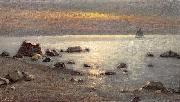 |
Carl Wilhelm Barth
|
|
(1847 - 1919) was a Norwegian painter.
He was born in Christiania. He studied painting under Hans Gude from 1881 to 1883, and having worked as a naval officer until then, he specialized in marine art. He is represented with three works in the National Gallery of Norway.
He was the son of Jacob Bøckmann Barth and brother of Agnar Johannes Barth, both foresters.
|
|
|
|
|
|
|
|
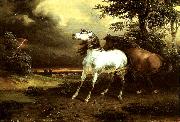 |
carle vernet
|
|
Antoine Charles Horace Vernet aka. Carle Vernet (14 August 1758 - 17 November 1835) was a French painter, the youngest child of Claude Joseph Vernet, and the father of Horace Vernet.
The Battle of Wagram; colored litho by Carle Vernet and Jacques SwebachBorn in Bordeaux, Vernet was a pupil of his father and of Nicolas-Bernard Lepicie. Strangely, after winning the grand prix (1782), his father had to recall him back from Rome to France to prevent him from entering a monastery.
In his Triumph of Paulus Aemilius, he broke with tradition and drew the horse with the forms he had learnt from nature in stables and riding-schools. His hunting-pieces, races, landscapes, and work as a lithographer were also very popular.
Carle's sister was executed by the guillotine during the Revolution. After this, he gave up art.
When he again began to produce under the French Directory (1795 - 1799) , his style had changed radically. He started drawing in minute detail battles and campaigns to glorify Napoleon. His drawings of Napoleon's Italian campaign won acclaim as did the Battle of Marengo, and for his Morning of Austerlitz Napoleon awarded him the Legion of Honour. Louis XVIII of France awarded him the Order of Saint Michael. |
|
|
|
|
|
|
|
|
|
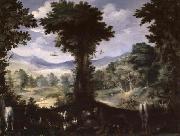 |
Carlo Antonio Procaccini
|
|
(born 1555) was an Italian painter of the late-Renaissance period.
He was the third son of Ercole, the brother of Camillo and Giulio Cesare the elder, and father of Ercole Procaccini the Younger (1605 - 1675). He was born at Bologna and initially trained by his father, though he excelled in painting landscapes and still-lifes with flowers and fruit, mainly in Milan.
|
|
 |
Carlo Bonavia
|
|
was an Italian painter known for idyllic landscape paintings, engravings and drawings. He was active from 1740 until his death in 1788. He is thought to be from Rome, but worked in Naples from about 1751 to 1788. He was trained in the Neapolitan landscape tradition of Salvator Rosa (1615-1673) and Leonardo Coccorante (1680-1750), but was much more strongly influenced by the work of Claude Joseph Vernet, who visited Naples in 1737 and 1746. |
|
|
|
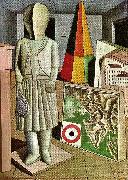 |
carlo carra
|
|
Carlo Carra (February 11, 1881 ?C April 13, 1966) was an Italian painter, a leading figure of the Futurist movement that flourished in Italy during the beginning of the 20th century. In addition to his many paintings, he wrote a number of books concerning art. He taught for many years in the city of Milan. |
|
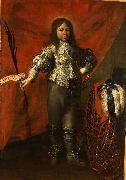 |
Carlo Ceresa
|
|
Carlo Ceresa (January 20, 1609 - January 29, 1679) was an Italian painter of the Baroque period active mainly around Bergamo.
His early life and training are poorly recorded. He likely trained in Bergamo. He visited Venice, yet esconced himself in the small town of San Giovanni Bianco in Val Bembrana. Mostly recalled for his portraiture, Ceresa also painted altarpieces and religious works in an understated fashion. |
|
|







